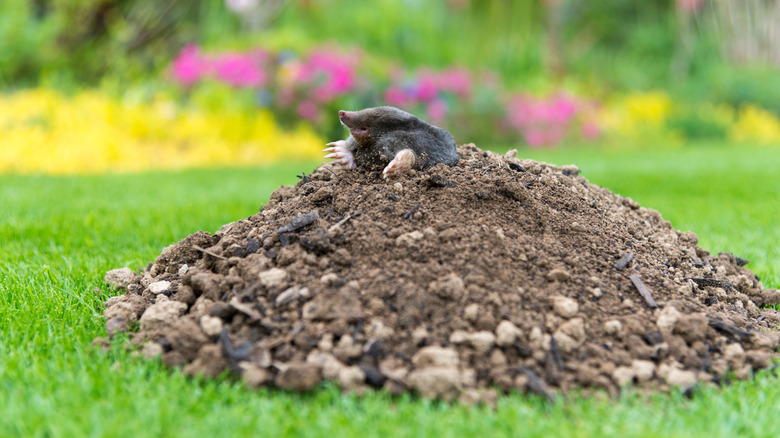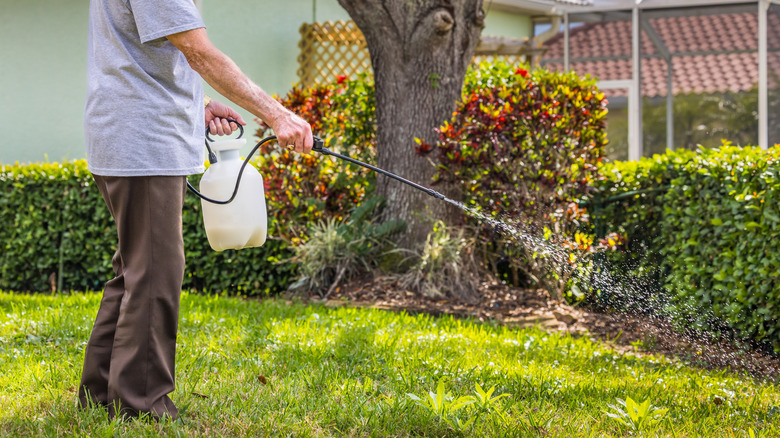Does Cinnamon Really Work To Get Rid Of Garden Moles?
We may receive a commission on purchases made from links.
Just when you think you've gotten your garden into prime shape — neatly mowed lawn, pruned shrubs, weed-free beds — the unspeakable happens. One mole hill appears, and then another. These distasteful mounds of loose dirt are the handiwork of furry insectivores that eat through yards, leaving hills and tunnels as they chase their meals. While setting up traps and hiring professional pest control companies may guarantee quicker results, some homeowners are determined to try a home remedy for moles in the yard.
One such option is the use of cinnamon to deter moles. After all, this common spice has been used to keep squirrels off bird feeders and rats out of the garden, throwing off animals that use their sense of smell for survival. This is similar to the way moles function, as they rely heavily on their olfaction to navigate through tunnels and seek out food.
However, little scientific research or clear evidence points toward the effectiveness of using cinnamon for this purpose. While some commercial repellents like Repellex mole and vole repellent contain cinnamon oil, the ingredient is combined with others like garlic oil, white pepper, and castor oil, the latter of which is most commonly found in mole repellents. That said, you won't harm your yard by experimenting with cinnamon; in fact, spray some cinnamon on your lawn and your grass will benefit from the spice's antifungal and antibacterial qualities. But to serve your intended goal of getting rid of moles, you may need something else.
Using castor oil as an alternative to cinnamon
If you've tried cinnamon and are looking for another option — and you want something that is safe for humans and the environment — consider castor oil. A number of commercial mole repellents, including Natural Elements mole and vole repellent and Bonide Molemax mole and vole repellent granules, contain this oil as the sole or main active ingredient, which has a taste and odor that is repulsive to moles. It has been found to effectively repel moles in the eastern part of the U.S., although not enough research has been done to test its impact on moles in other parts of the country.
To make your own spray, combine one part dish soap, three parts castor oil, and three parts water. In order for the soil to best absorb the solution, first soak it with at least a half-inch of water, and then follow the DIY spray with another inch of water. Applying the castor oil mixture with a lawn sprayer may be your best bet if you're working with a large area. Your target should be the mole tunnels and mounds; you also can mix the solution into the dirt at various points along the tunnels. Whether you're using a store-bought product or a homemade version, reapply as directed by the manufacturer or as needed, especially if your area receives heavy rain that would likely wash away the repellent.

